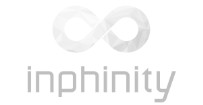Mergers and acquisitions of companies – a proven way to increase value of the enterprise

Robert Wachowiak
Reading time: 4 min
 Date: 30 November 2023
Date: 30 November 2023Mergers and acquisitions, both terms refer to joining of two companies to achieve particular financial benefits, increase the company’s favorable reputation in the market among shareholders and development and increase of the company’s market share. However, what does it really mean? Both require legal and organizational undertaking. Do they differ so much?
From the article you will learn:
- What are mergers and acquisitions.
- What strategy to take when preparing for a corporate transformation.
- What are the benefits of a merger/acquisition.
Mergers and acquisitions of companies – what do they consist of?
A merger is a friendly combination of two entities into one, new organization. Acquisition means the purchase of one entity by another. Mergers, these days, are very rare, although many companies try to use the term to gain the confidence of shareholders or investors. The common reason for voluntary merger is to boost revenue and profits of acquiring company by reducing operational costs or expanding to new markets and sectors.
The enterprise’s takeover approach, also is looking for economies of scale improvement, cost reduction or expansion of new products but in addition they might engage it to obtain the technologies and save investment costs and R&D.
Does transformation matter at the system level?
Merge & acquisition and demerge/carve-out – all of them seem to have a common ground in terms of system adjustment. As a result of an audit we should be able to answer the most important question: what is the current systems landscape and what is the expected result of transformation. What’s the organization culture, business processes, activities, applications and infrastructure of the new operator. Define all the possible obstacles and GAPs at various stages, followed by optimal solutions with pros and cons.
In companies acquiring or forming a merger, once relevant strategy is chosen, team assigned, communication sent into all parties we can start the system carve-out with high priority on business continuation and excluding system disruption. It can be split into two steps: Clone of the SAP application itself (including system configuration and repository) and data transfer as the second step. This can be achieved only when we transfer data from one SAP box into the new one while for S4/Hana transition or non SAP legacy systems adoption can be more flexible with a lot of new opportunities for enhancements (e.g. Cloud).
With our experience in the industry and recommendation you will find that recreation of the origin system and migration of only relevant sales data can be the most effective way to achieve it in a ratio of costs, time and effort. On the other hand, the transition time is the best opportunity to enhance business processes, align the into templates, validation, data cleanup, remove unnecessary activities and implement solutions to increase the system effectiveness.
Following the PWC reports – the word we live in, despite the obstacles like pandemic, constantly rising inflation, wars behind the wall, high interest rates, high taxes and greater regulation, expansion of awareness of the changing world has led to great opportunities at the company’s fusions level and another year in a row reached a record number of deals on this matter.
What are the benefits of corporate M&A?
Hard benefits economic and capital include savings in money and human resources and cost avoidance like energy, networks, licenses, systems, servers and storage).
Soft benefits mainly around risk mitigation and include finance period close efficiency and synergies, global template compliance, pallets distribution labeling system implementation will streamline the dispatch of multiple Distribution Channels in exports markets, prevention of a business disruption, governance and control, simpler future transition into S/4 Hana, global traceability standard and drive further efficiencies (factories to be 100% comparable, lowering risk for reconciliation issues – harmonized organization driven by a common solution).
Mergers and acquisitions and the many benefits of transformation are the natural results of business growth and the successful execution of a complex process. At BPX, we accompany our Clients from start to finish to achieve the stated goal, providing full support and comprehensive services at every stage of the project. Check out how we can carry out the M&A process for your company and what sets us apart in our approach: https://www.bpxglobal.com/en/solutions/mergers-and-acquisitions/.
Roadmap – possible scenarios.
Brownfield/system conversion (transition of existing processes into a new box):
- simple system conversion;
- no business processes disruption;
- process flow validation, enhancement, adjustments;
- harmless transformation.
Greenfield/New implementation (on premise/cloud):
- a fresh system setup;
- simplification and redesign processes based on ready-to-run business processes;
- reference solution delivery with the new system.
Mix of both above (transition only selected processes with new design for the rest):
- less efforts by reusing some of the business solutions while redesigning others (e.g. Central Finance);
- agile approach with low risk of go-live;
- possibility to merge of existing SAP ERP instances (carving out specific areas of application in the cloud);
- data cleanup possibility;
- open items transfer with short conversion duration time
- go-live planned/divided per country/unit with overlapping resources.
See recent writings
You drive us to strive for excellence in delivered projects and common challenges. Feel invited to read out blog that provides more in-depth knowledge on our implementations and experience. Read articles about digital business transformation, ERP and Business Intelligence systems. Discover interesting practical applications for future technologies.
- Blog
Navigating the challenges of introducing new software in a company – the role of technology and social dynamics
Contact us!
Let’s talk! Are you interested in our solutions? Our experts are happy to answer all of your questions.
 pl
pl

















